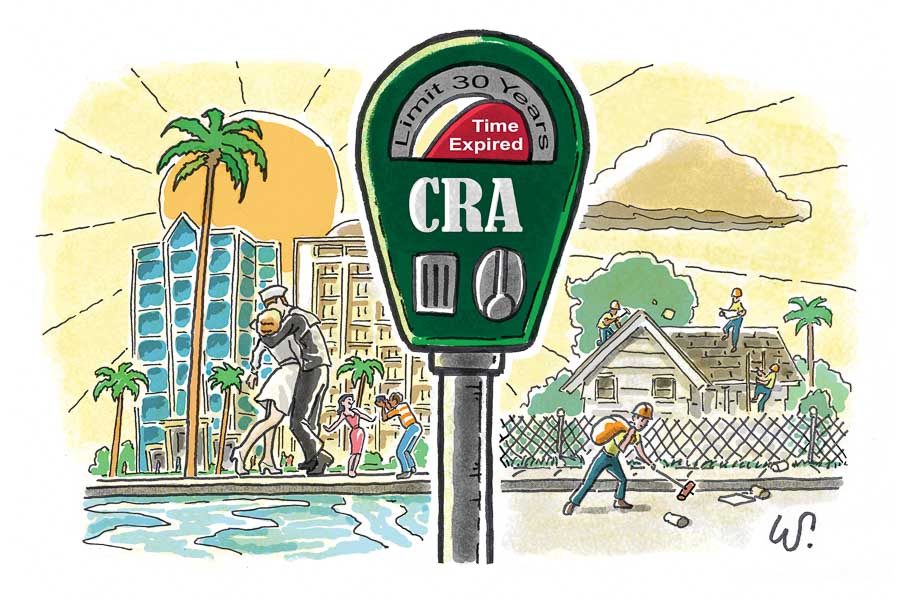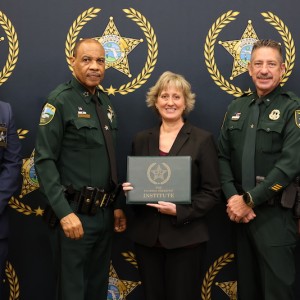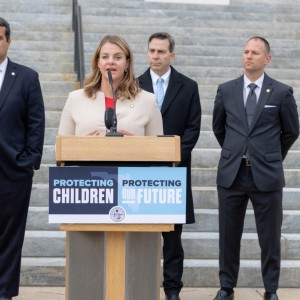The question of who gets $4.7 million in local tax revenue normally can be solved with a simple call to the tax collector. But a tense disagreement over whether Sarasota County still owes the City of Sarasota that much money as part of a now-expired community redevelopment plan endured over most of the past year. And it manages to dominate discussion between each of the two jurisdictions. City Manager Tom Barwin says that over the course of a 30-year agreement for the county to contribute funding to the Downtown Sarasota Community Redevelopment Agency (CRA), only 29 payments ever made their way from county coffers to city accounts, so there should be one more payment, and the money’s still needed. “The North Sarasota and Newtown area is really making great progress and we want to see that momentum continue,” says Barwin.
But county officials say this isn’t a mortgage. The CRA was structured so that no payment would be made the first year, and now the matter is settled. And to continue squabbling over funding doesn’t set a good stage for future discussion. “If you had a bad partnership with somebody, you don’t sign up again for another partnership,” says County Commissioner Nancy Detert.

ILLUSTRATION BY WOODY WOODMAN.
The latest episode may seem a petty dispute, albeit one over a substantial check. But this has been the way CRA discussions took place between the city and county since the redevelopment partnership first forged in the late 1980s. So what kept emotions so high for so long? By all accounts, the plan’s incredible success.
Revitalizing the Downtown Core
Out of Florida’s 67 counties, only two—Sarasota and Miami-Dade—were named for their most prominent city. So, for its entire existence, the identity of the 556-square-mile county has been tied closely to the success of its most prominent municipality. And during the 1970s and 1980s, when retailers and businesses started to shift away from urban centers, the vitality of the county seat seemed suddenly in question. Among downtown’s oldest business personalities, the general consensus was that Sarasota quickly was becoming a ghost town, that if you fired a cannon downtown you wouldn’t hit a soul.
So Sarasota City Commissioners in 1989 turned to a solution that had been tried to some success over past decades in Florida. The state in 1969 put in place the structure for community redevelopment agencies, where jurisdictions would establish boundaries and dedicate tax revenue that came from improvements to property values with the dedicated areas. Called tax increment financing (TIF) the funding incentivized and guaranteed an improvement in economic condition would result in money getting reinvested in areas touched by blight.
But even nearly 20 years after the creation of CRAs in Florida, there remained few stories of bustling redevelopment success. Then-City Commissioner Fredd Atkins recalls how many in the city questioned dedicating funding to the city core, including much of his minority constituency in north Sarasota. “But what I had to realize was that in order for the city to help the more disadvantaged and disenfranchised, we had to make sure the city heart started pumping again,” he says. In 1986, the city commission voted 3-2 to create a downtown CRA. The result would eventually be revitalization downtown. “I’m not aware of other major tools sanctioned by the state of Florida and used widely in practice that allow you to raise the kind of tax increment revenue and give the sanctioned ability and the control that a CRA has,” says Andy Dorr, a senior vice president at Githler Development, who in 2015 headed up a committee exploring the viability of the CRA.
In the case of the Sarasota CRA, an area around downtown Sarasota was established that went west to the Bayfront and east nearly to Lime Avenue. At its greatest north-south stretch, the district stretched from 10th Avenue south to Mound Avenue, but covered a more condensed area in east downtown.
As for the administration of the CRA, Sarasota leaders elected to make the Sarasota Commission the oversight board for the agency. Sarasota would contribute any city property taxes raised through the TIF structure in the area toward redevelopment, and county officials agreed to do the same. The latter would become a tension point in the future, as county funding would go toward CRA projects even though the city maintained completely authority regarding policy and expenditures there.
One thing no one argues about—Downtown Sarasota made a huge turnaround over the coming decades. The city core would become a recognized model in working downtowns, with restaurants, hotels and groceries opening up in a previously underserved area. And much of that success came through projects funded with CRA revenue. Whole Foods Market would receive developer incentives and have funding set aside for a parking garage. The Sarasota Herald-Tribune, then owned by the New York Times, relocated to downtown with the help of a CRA grant. Funding would also be used to help develop a cultural master plan and increase the number of parking garages in downtown.
But there were also difficulties. City officials would also use the funding to boost police presence for special events, for example. At a time of budget cuts, then-City Manager Bob Bartolotta used CRA money to help avoid further staff layoffs by justifying, for example, that police patrolling downtown also helped with redevelopment efforts in the city core.
And throughout the time the CRA was in effect, county leaders remained frustrated at any lack of control. Then-County Administrator Jim Ley sent a letter at one point about whether the city provided enough oversight on the funds “I am increasingly concerned with what it means to make an ‘agreement’ with the City of Sarasota,” Ley wrote in a memo to city leaders in 2009. “… The gaming that has been attempted is a useless waste of energy.”
Expansion
Those concerns seemed to ratchet up based on a controversial move to add Newtown to the CRA. The argument at the time was that downtown no longer could be labeled accurately as a blighted area, but the North Sarasota community of Newtown, which includes areas both within and outside the city limits, certainly did. A Newtown CRA was established with a separate advisory board. Atkins, who’d left the City Commission but returned in part to make sure Newtown would benefit from prosperity, worked to bring the area into the redevelopment fold. “We put together a plan for a new CRA in Newtown, and also put together a plan to receive money from downtown,” Atkins recalls.
That irritated downtown leaders at the time. Merchant leader Ernie Ritz said at the time that the move would compromise efforts to draw more major development downtown. “We are never going to change the decision that we only get a third of the pie now,” he says. Ultimately, downtown leaders pursued new funding mechanisms to ensure there would be revenue generated for downtown improvements and also established a Downtown Improvement District.
In Newtown, city leaders moved ahead with signage improvement programs and city lighting repairs. New parks opened in the area as staff members focused on North Sarasota mapped a future with affordable housing and commercial development incentives.
But the timing couldn’t be worse. TIF financing builds off a base year for a CRA, and in the case of Newtown that year was 2008, immediately before a real estate-led recession that would cripple the economy for years. Only in the past year have real estate values in Newtown started to rise above the base level.
Meanwhile, interest in continuing the original CRA past its 30-year sunset in 2016 showed signs of stress. At a joint meeting with Sarasota city and county commissioners, a majority of county commissioners made clear a lack of interest in renewing the CRA tool. “We have in Sarasota County other areas as in need as Newtown,” said then-County Commissioner Jon Thaxton.
In anticipation of the CRA’s expiration, a study group formed. Led by Dorr, the group found reason to continue, while identifying ways oversight should be changed so that county and city leaders had a more equitable say on spending. But commissioners remained suspicious of the mechanism. County Commissioner Charles Hines said that downtown no longer could make the compelling case it deserved special attention. If anything, the city should look at a more specialized CRA, such as one dedicated to improving the Bayfront. “But sometimes we have got to say that today we need to replace a chiller. And that costs how many millions?” Hines said. The basic priorities of government though, would need to come first. County commissioners voted unanimously in 2016 to let the CRA expire and disappear.
Fight for Final Funding
Shortly after that, City Hall accountants discovered what they believed a financial issue. Because no revenue went into the CRA the year after it was created, the county had only ever made 29 installments to the CRA. Atkins says no one in the city ever doubted a 30-year agreement called for 30 years of revenue. But County Administrator Tom Harmer has maintained that since there was no revenue increase in the initial year to inform a TIF payment, that was never part of the deal. County Commissioner Alan Maio sent a letter to the city last year expressing that obligations had been met. “The county is proud to have been a part of the very successful Downtown CRA,” he wrote. “We believe it has exceedingly accomplished the goals and objectives envisioned by both commissions at the time of its inception, and that it is a testament to what can be accomplished via a mutual accord.”
Since then, the city and county have tried to enter mutually beneficial discussions, but to no avail. County and city commissioners asked for Barwin to bring a list of alternative ways to settle the matter, but balked when he suggested the county fund a new 30-year CRA in Newtown. “Then we are just dragging it out for 60 years,” says County Commissioner Nancy Detert.
But city officials say regardless of whether the county participates, they have the authority to re-establish the base year for the Newtown CRA and probably will. “It’s essential,” says Mayor Shelli Freeland Eddie. Atkins says that the CRA will be a way to ensure tax revenue indeed gets shifted to Newtown. North Sarasota remains the most economically depleted region of the city, and he says the downturn simply undid the hopes officials had when the Newtown CRA first established in 2008.
Now, it’s just a matter of making sure everyone knows how many checks should have changed hands by 2047.









